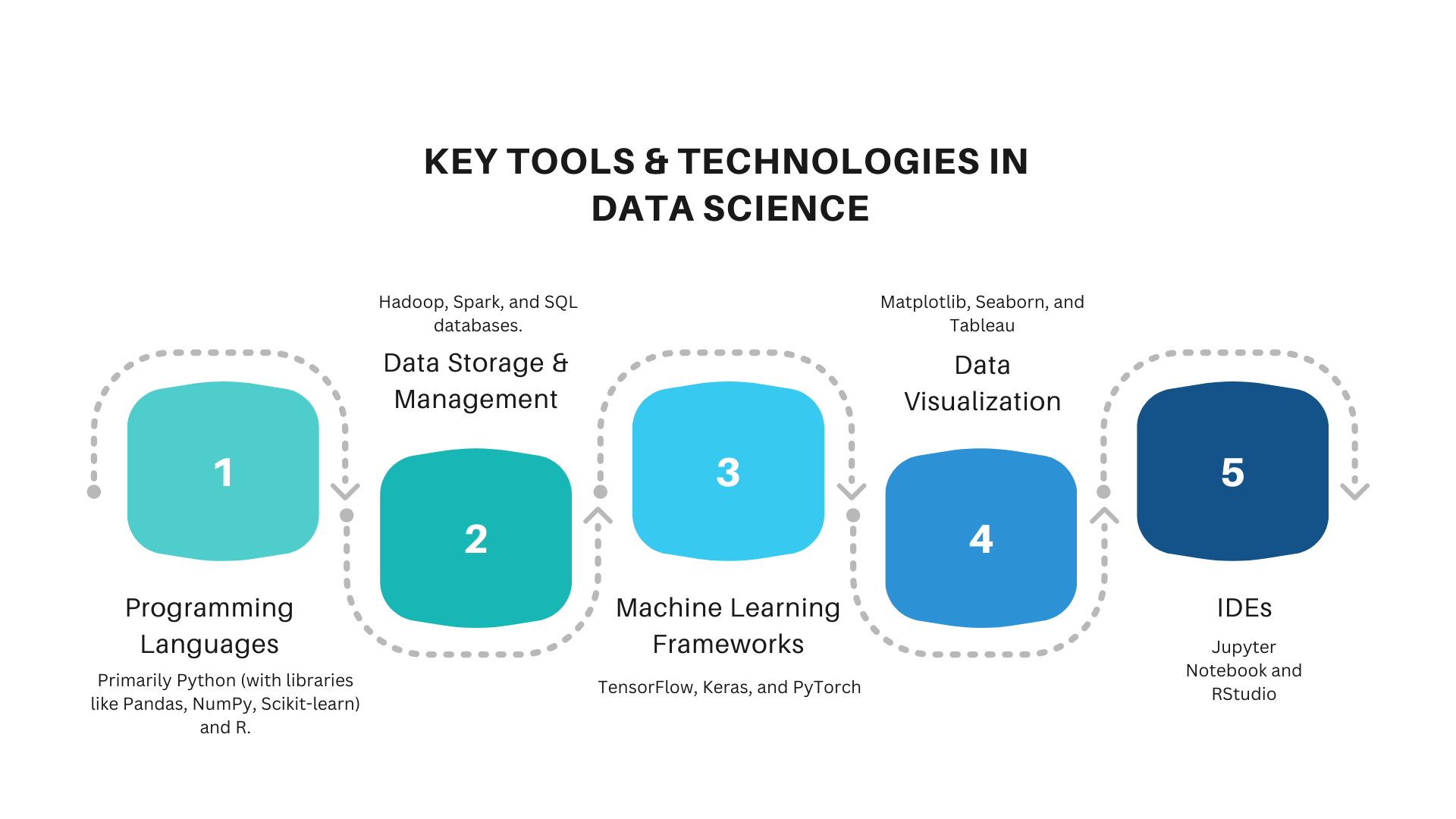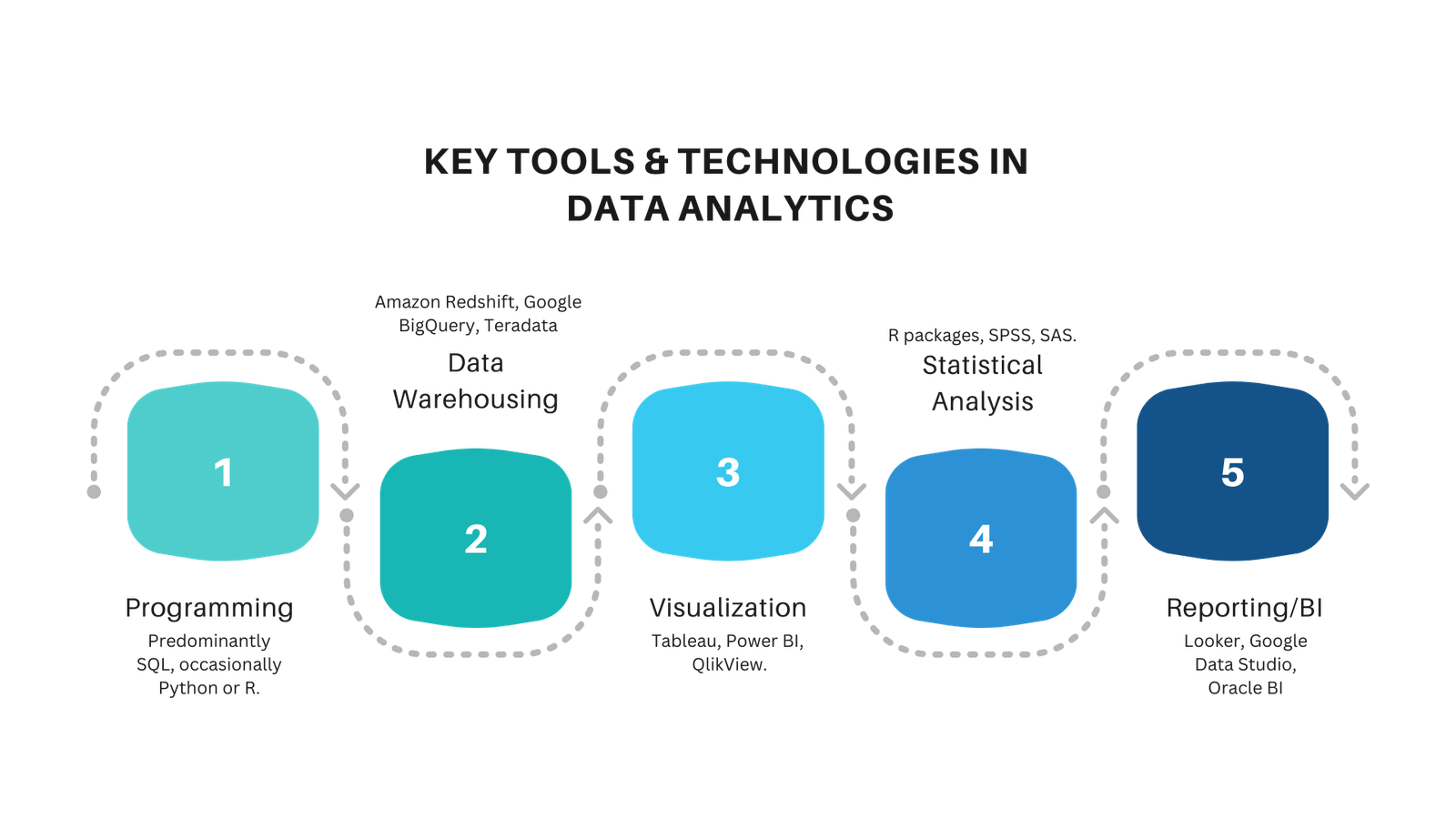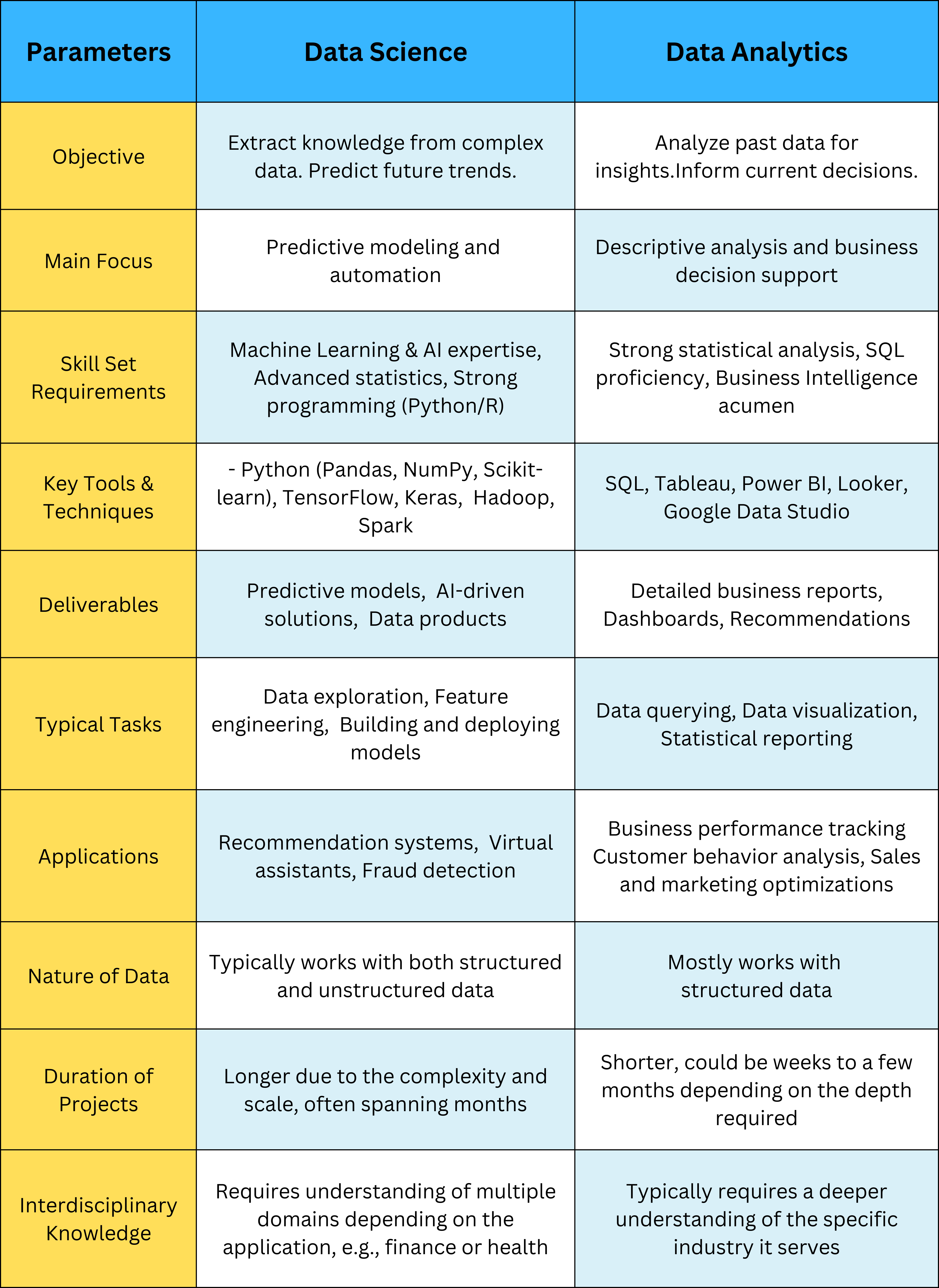
In today's data-driven world, the terms "Data Science" and "Data Analytics" have become ubiquitous. To the uninitiated, they may seem interchangeable. However, while both fields revolve around data and making sense of it, they have distinct focuses, objectives, and processes. For students navigating their academic and early professional journeys, understanding the nuances between the two can be pivotal. It's not just about knowing the terminology but about grasping which pathway aligns best with their passions, skills, and career aspirations. In India, data scientists, known for advanced data modeling, typically earn from ₹5 lakh at entry-level to over ₹25 lakh at senior levels. Data analysts, focusing on data interpretation, start around ₹3 lakh and can reach up to ₹20 lakh with experience. These figures of data science vs data analytics salary, influenced by experience and location, highlight the growing value of data professionals in the country's tech landscape. Through this blog, Let us know more deeper about the what is data science vs data analytics :
Definition and Scope of Data Science
What is Data Science?
At its core, data science is an interdisciplinary field that seeks to derive meaningful insights from large and complex datasets. It encompasses a range of techniques from statistics, computer science, and information theory to analyze, interpret, and represent data. The scope of data science goes beyond mere analysis; it covers the creation of data models that can predict the future or classify unseen data points.
Core Components and Processes of Data Science:

Figure shows Core components & Process of Data Science
1. Data Collection & Cleaning
- Collection: The process begins with gathering raw data from various sources, be it sensors, user inputs, databases, or external data sources.
- Cleaning: Raw data often contains errors, missing values, or outliers. Cleaning ensures that data is accurate, consistent, and usable. This step often takes up a significant portion of a data scientist's time but is crucial for the accuracy of subsequent stages.
2. Data Exploration & Experimentation
- Exploration: This involves diving deep into the data to identify patterns, correlations, and anomalies. Techniques like data visualization and statistical analysis play a pivotal role here.
- Experimentation: Once initial insights are gathered, hypotheses are formed and tested. This iterative process aids in refining the insights and preparing for modeling.
3. Machine Learning & Predictive Modeling
- Machine Learning: It's an application of AI that allows systems to learn and improve from experience without being explicitly programmed. In data science, ML models are trained on data to make predictions or decisions.
- Predictive Modeling: This is about forecasting future outcomes based on patterns in the data. It can range from predicting stock prices to determining the likelihood of a patient's illness in healthcare. Towards predictive modeling, Airbnb case study was also covered, and get to know how conversion rates are interestly increased by 10% with the help of data science.
Also read: what is the scope of data analytics
Key Tools & Technologies in Data Science:

Figure shows Key tools and Technologies of Data Science
- Programming Languages: Python and R are the frontrunners, with Python offering extensive libraries like Pandas, NumPy, and Scikit-learn.
- Data Storage & Management: Technologies like Hadoop, Spark, and SQL databases come into play.
- Machine Learning Frameworks: TensorFlow, Keras, and PyTorch are popular choices.
- Data Visualization Tools: Matplotlib, Seaborn, and Tableau offer graphical representations of data.
- Integrated Development Environments (IDEs): Jupyter Notebook, RStudio, etc., provide platforms for code development and execution.
Career Opportunities in Data Science:
- Data Scientist: The quintessential role, responsible for extracting insights from complex and unstructured data.
- Machine Learning Engineer: Focuses primarily on designing, implementing, and deploying machine learning applications.
- Data Engineer: Ensures the smooth flow and availability of data, often working with big data technologies.
- Quantitative Researcher: Applies mathematical and statistical methods to real-world problems, commonly found in finance.
- AI Specialist: Specializes in creating solutions using AI techniques, including neural networks and deep learning.
Definition and Scope of Data Analytics
What is Data Analytics?
Data Analytics is a systematic computational analysis of data or statistics. It aims to discover actionable insights from historical data sets and typically works with structured data to answer specific questions. The boundary between data science and data analytics can be fluid. While both overlap in many areas, data analytics scope traditionally leans more towards a business or operational perspective, providing actionable conclusions that decision-makers can use.
Core Components and Practices of Data Analytics :

Figure shows Core components & Process of Data Analytics
1. Data Collection & Preparation
- Collection: Similar to data science, the first step involves gathering data from various sources. The focus here is to obtain relevant data to answer specific business questions.
- Preparation: This entails sorting, cleaning, and organizing data. Structuring data correctly is vital as it directly impacts the quality of insights derived.
2. Data Visualization & Interpretation
- Visualization: Using graphical representations to showcase data patterns, trends, and outliers. Visualization tools make complex data more understandable, actionable, and usable.
- Interpretation: Deciphering the visualized data to identify key patterns and insights that can be acted upon.
3. Statistical Analysis & Reporting
- Statistical Analysis: Employing statistical methods to analyze data and generate useful business reports. It can range from calculating averages to determining correlation and causation.
- Reporting: Based on the analysis, detailed reports are generated to present the findings in a structured manner, often supported by visual aids like graphs and charts.
Key Tools & Technologies in Data Analytics

Figure shows Key tools and technologies of Data Analytics
- Programming and Scripting: SQL for database management, and sometimes Python or R for more complex analyses.
- Data Warehousing Solutions: Tools like Amazon Redshift, Google BigQuery, or Teradata.
- Data Visualization Software: Tableau, Power BI, and QlikView are industry favorites.
- Statistical Analysis Tools: R's suite of packages, SPSS, and SAS provide robust statistical analysis capabilities.
- Reporting and BI Tools: Solutions such as Looker, Google Data Studio, and Oracle BI facilitate comprehensive reporting.
Career Opportunities in Data Analytics
- Data Analyst: The primary role that involves cleaning, inspecting, transforming, and modeling data to derive actionable insights.
- Business Analyst: Focuses on identifying business needs and finding technical solutions, often working closely with both IT and business teams.
- Quantitative Analyst: Typically found in finance, they use statistical and mathematical models to inform financial and investment decisions.
- Market Research Analyst: Studies market conditions to identify potential sales opportunities for a product or service.
- Operations Analyst: Focuses on internal processes, identifying inefficiencies and recommending improvements.
Comparision of Data science and Data Analytics

Figure shows Comparision of data science vs data analytics
How to Choose as the Right Career Path?
Factors to Consider for Students
- Before diving deep into either data science or data analytics, students need to understand their own strengths, areas of interest, and career aspirations. Some factors to consider include:
- Personal Interests: Do you love exploring and experimenting with large datasets, or are you more interested in drawing actionable insights from data?
- Technical Aptitude: While both paths require a certain level of technical proficiency, data science may require deeper programming and mathematical expertise.
- Industry Preference: Some industries might have a higher demand for data scientists, while others prioritize data analysts.
- Job Availability & Location: Look at the job market in your preferred location; which roles are more in demand?
Curriculum and Course Recommendations
Starting with the right courses is essential as a solid foundation for data science or data analytics:
For Data Science:
- iNeuBytes Data Science Course: Offered by iNeuBytes, the 3-month beginner's course in data science offers a solid foundation in data science essentials, complemented by a one-month virtual internship to apply your skills in real-world scenarios. This course ensures you're well-prepared for the industry with dedicated job assistance. But if you're aiming for the pinnacle of career security, the 6-month full stack data science course is your golden ticket. Dive deeper into advanced techniques and tools, and upon completion, benefit not just from job assistance but a 100% job guarantee. Both courses are delivered via live video sessions, ensuring interactive and engaging learning experiences. With iNeuBytes, you're not just learning; you're future-proofing your career.
- Machine Learning by Stanford University: Available on Coursera, this course is a comprehensive introduction to machine learning, data mining, and statistical pattern recognition.
- Deep Learning Specialization: This Coursera offering dives deep into neural networks, deep learning, structuring machine learning projects, and more.
For Data Analytics:
- iNeuBytes Data Analytics Course: offered by iNeuBytes, it's a live video learning platform offering instructor-led interactive online training in data science. Their comprehensive curriculum spans from foundational principles of data analysis to advanced techniques involving Python, SQL, Tableau, and Power BI. With courses tailored for both beginners and advanced learners, iNeuBytes ensures a holistic learning experience by including a one-month virtual internship program, allowing students to apply their newfound skills in real-world scenarios.
- Google Data Analytics Professional Certificate: Available on Coursera, it's a beginner-friendly course that covers the fundamentals of data analytics.
- Data Analysis and Visualization with Excel by the University of Michigan: This course, available on Coursera, provides a deep dive into Excel, a popular tool in data analytics.
Building a Portfolio: Tips and Tricks
- Having a portfolio can set you apart from other candidates. Here are some tips:
- Personal Projects: Choose projects that resonate with you and showcase your unique skills.
- Use Real Data: Sites like Kaggle provide datasets that can be used for portfolio projects.
- Document Your Process: Whether it's through a blog or GitHub, make sure you detail your approach, challenges faced, and the solutions you devised.
Networking and Industry Involvement
- Building a network can provide opportunities, mentorship, and insights that are invaluable for your career:
- Attend Workshops & Meetups: Sites like Meetup.com often have groups dedicated to data science and analytics.
- Conferences: Attend industry conferences to learn from the best and network.
- Online Communities: Join forums, online communities, and social media groups where professionals from these domains hang out.
Looking Ahead: The Future of Data Science and Data Analytics
The future is promising for both domains:
• Integration with AI and Automation: As AI technologies mature, data science will be at the forefront of integrating these technologies into various sectors, from healthcare to finance.
• Increased Demand for Real-time Analytics: With the proliferation of IoT devices and instant data generation, real-time data analytics will become more prevalent, providing insights faster than ever before.
• Ethical Considerations: As data becomes a central part of decision-making processes, ethical considerations around bias, privacy, and fairness will gain prominence. Professionals in both fields will be instrumental in guiding these discussions.
• Continued Learning & Adaptation: Both fields will witness rapid technological advancements. Continuous learning and adaptation will be key for professionals to stay relevant.
In conclusion, whether you're leaning towards data science or data analytics, the journey is bound to be exciting, rewarding, and full of learning. The most important thing is to stay curious, keep updating your skills, and always strive to draw meaningful insights from data, no matter its size or source.